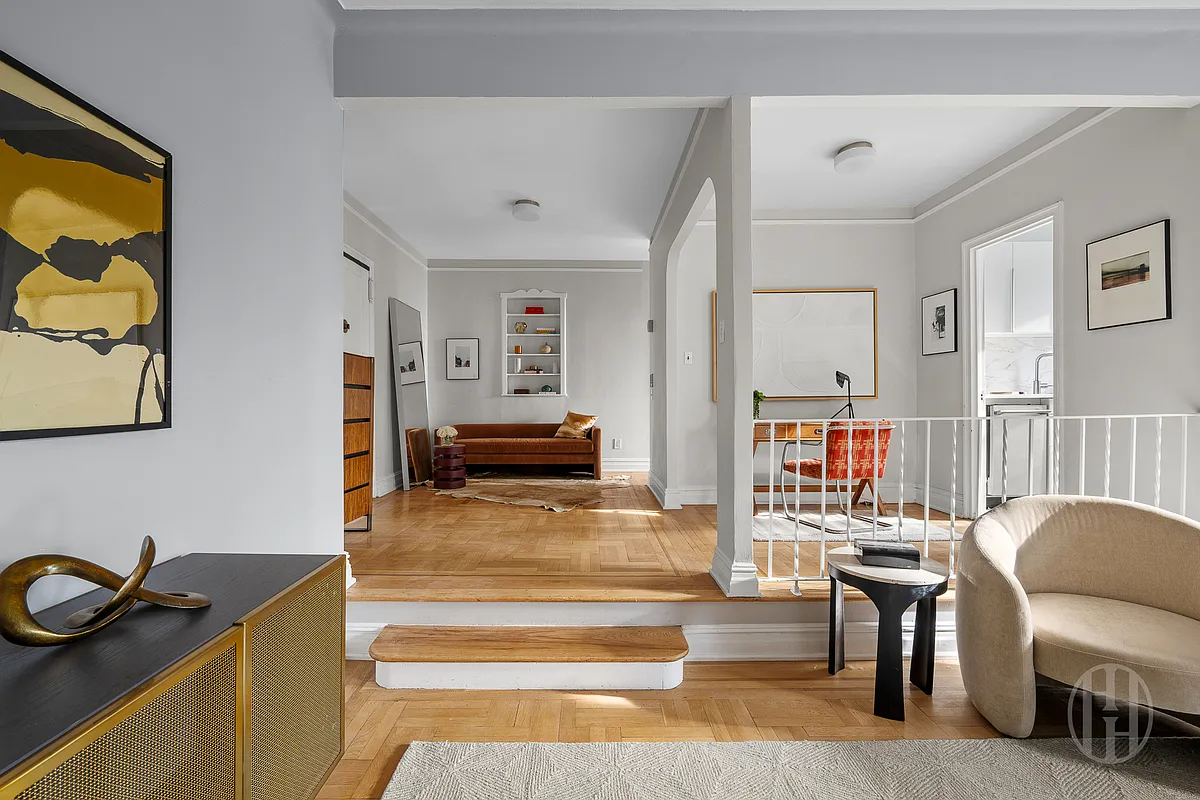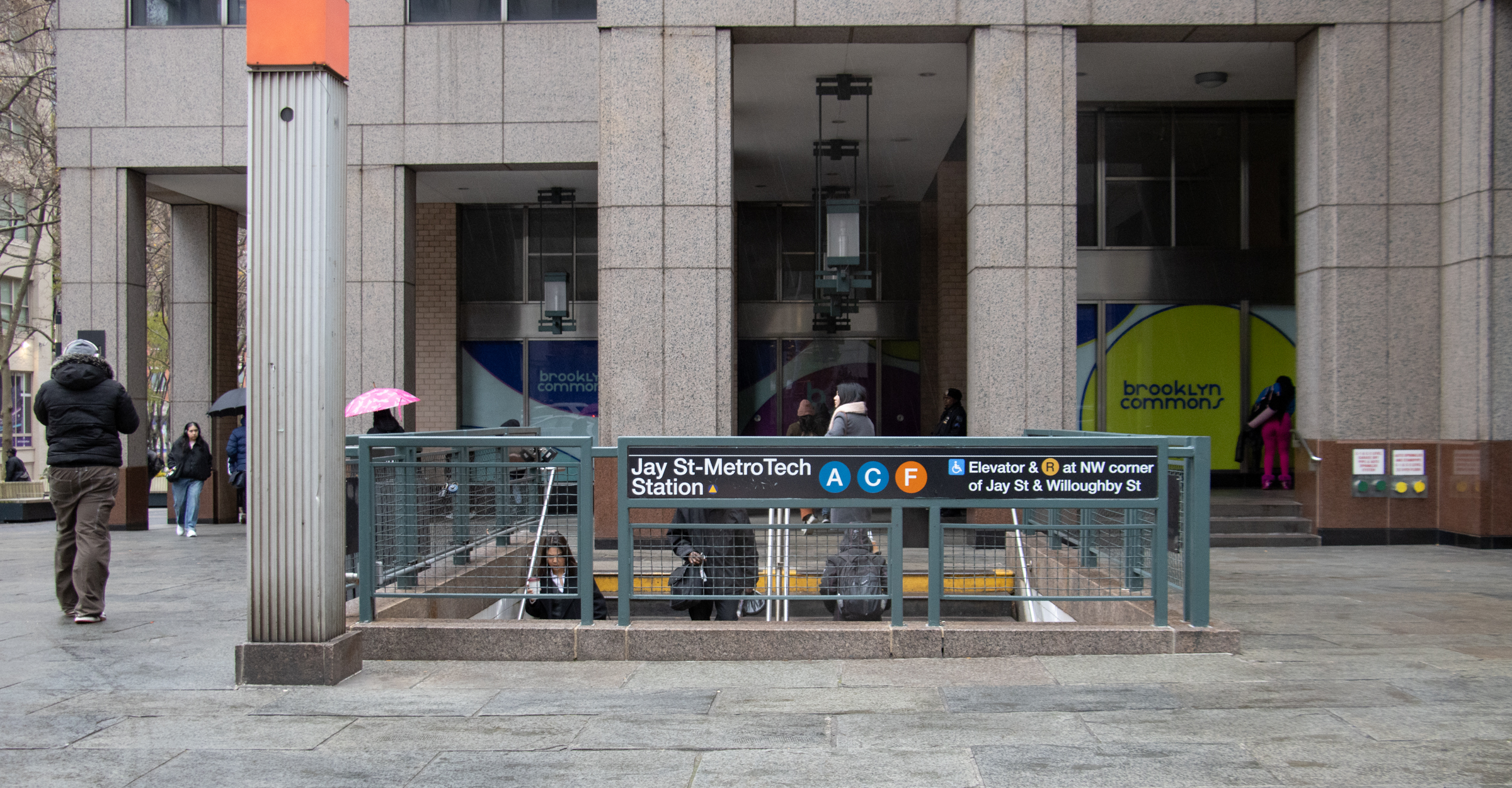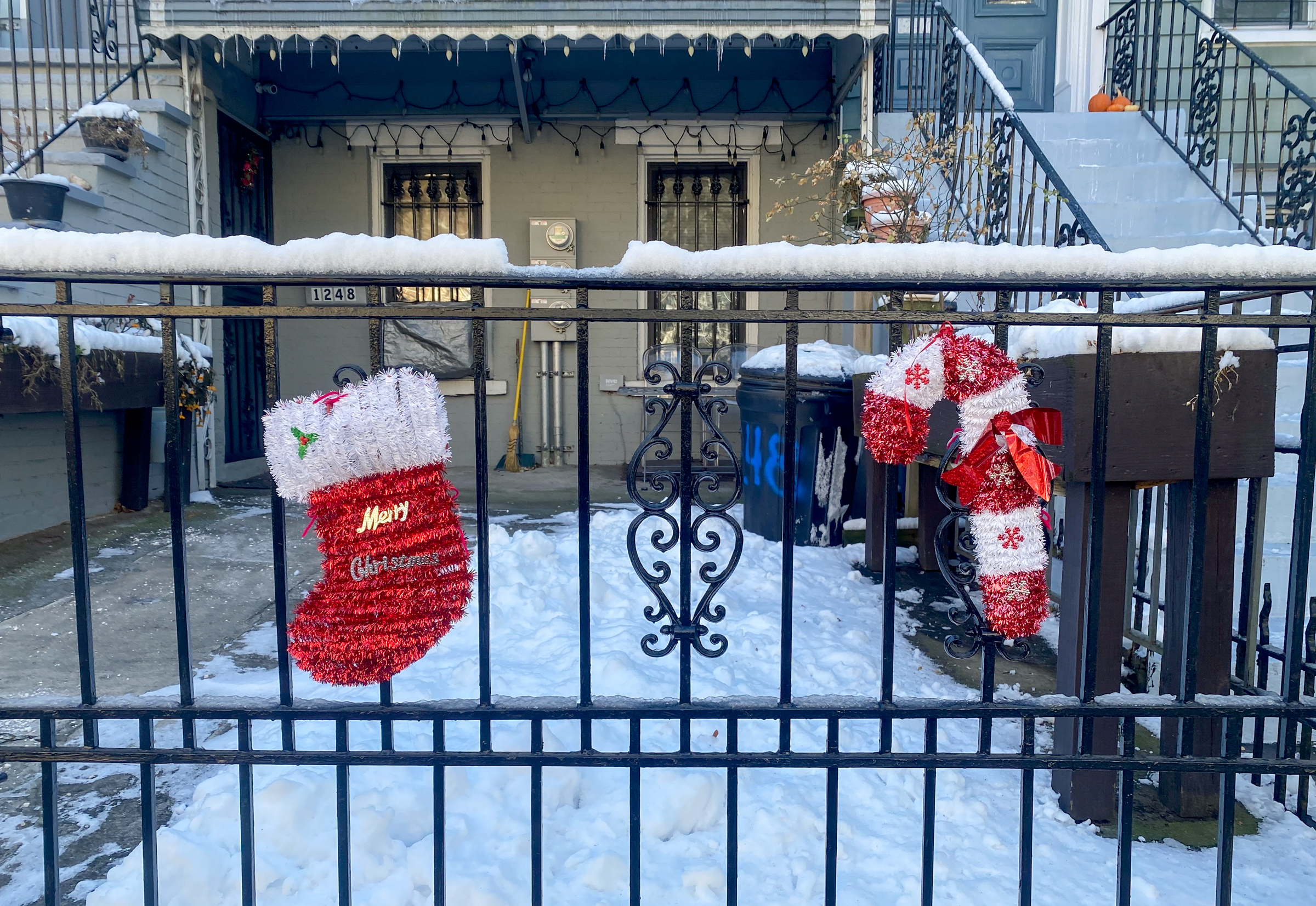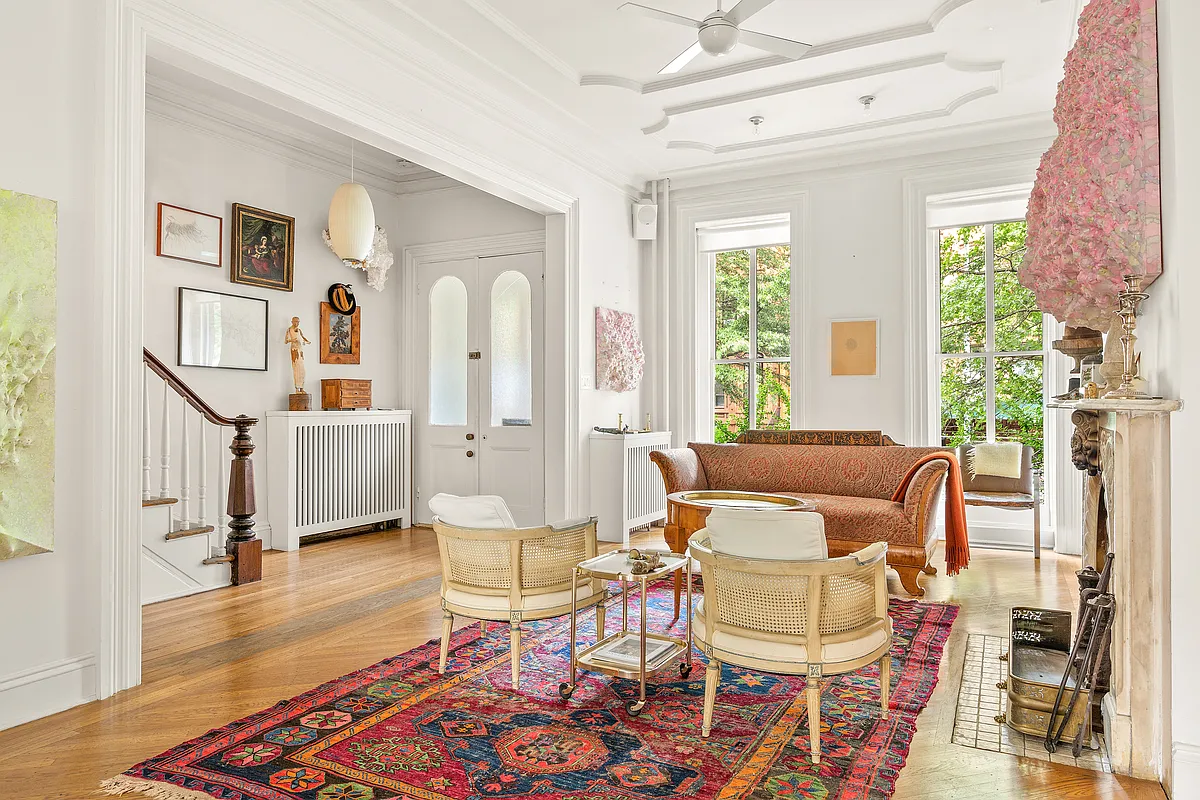Strange Bedfellows In Southside Landmark Fight
The battle over the future of two old buildings in South Williamsburg is creating some strange alliances — all of which were on display on Monday at a curbside press conference in front of 118 and 120 South 8th Street (photo on the jump). Members of the Orthodox Jewish and Hispanic communities joined artists, activitists…
The battle over the future of two old buildings in South Williamsburg is creating some strange alliances — all of which were on display on Monday at a curbside press conference in front of 118 and 120 South 8th Street (photo on the jump). Members of the Orthodox Jewish and Hispanic communities joined artists, activitists and councilmen to express their opposition to developer Michael Zazza tearing down two of the area’s oldest buildings to construct a 20-story residential tower (which at this point he can do as-of-right). Hannah Bloch, who’s been spearheading the movement for the past several months, seems to genuinely care about preserving the buildings — and to have grave reservations about the mid-block location of the tower from an urban planning perspective. As for the other other two groups, from where we sit, their sudden interest in preservation reeks of opportunism and is particularly ironic given their complete lack of concern about the borough’s architectural heritage (and future) up to this point.
But what about the merit of the landmarking request? The buildings were striking enough that we thought to take this photo of them during a stroll back in the Spring of ’05. Among the organizations who spend their days thinking about preservation issues, there’s a lack of consensus about whether the buildings should be preserved based on their architectural merit (despite agreement about their meaningfulness in the borough’s history). While the Four Borough Preservation Alliance has backed the landmarking effort, neither the Municipal Arts Society, Historic District Council or the more local Waterfront Preservation Alliance has deemed this to be a battle worth fighting. David Yassky, previously reported to be in favor of landmarking these buildings, now is reserving judgement until LPC makes an official comment. If the question is, Are these buildings worth preserving, we’d say “absolutely”. But it sounds to us like the behind-the-scenes issue is whether, given the preservation movement’s lack of resources, these two buildings are worth spending valuable time and political capital on. That’s a trickier question, and one we are ill-equipped to answer.
Phoenix Rising? Maybe About 20 Stories [Greenpoint Star]
GMAP






these are truly ugly buildings. those knish’s better have been REALLY good to justify saving that building.
“As for the other other two groups, from where we sit, their sudden interest in preservation reeks of opportunism and is particularly ironic given their complete lack of concern about the borough’s architectural heritage (and future) up to this point.”
And like no one else reeks of opportunism in Brooklyn? There are lots of strange bedfellows in NYC -show me a politician who isn’t an opportunist. In fact, show me a homeowner or renter or artist or activist or air-breather who isn’t on some level or another. It’s kind of offensive to pick these particular 2 groups out of the protestors and question their integrity, interests or needs.It’s one thing to talk about the situation in factual terms, but this type of commentary seems aimed more at roiling the waters to get a discussion going. Seems a little opportunistic to me.
These buildings look unremarkable. Is this really a battle about maintaining low density and scale?
that sounds like quite a stretch. does anyplace where anyone ever did anything holds an important place in the cultural heritage of a neighborhood now? this is such provincial reasoning. anyone who holds this dilapidated former knish factory in such high esteem should pool their money and offer to buy the building from the developer for whatever the fair market value is and create the “museum of the utmost historical significance of knishes in the great history of brooklyn” instead.
We think the “historical meaningfulness” refers to the fact that one of the buildings used to house Gabila’s Knish factory, which holds an important place in the cultural heritage of the neighborhood.
Although some developers that are hasidim surely have no taste and seem to break or get around the law to proceed with their horrid looking buildings,
does smack of bigotry,etc when you blame the whole religious group.
explain what’s meaningful about these buildings “in the borough’s history”. i think this is another case of being in love with everything old and knee-jerkingly against all development. A gritty patina that photographs well is no reason to turn this into part of the museum of old brooklyn that you’d like the boro to become.
It’s laughable that the Hasids would try to play the landmarks card with their track record. Gimme a break.
Stop landmarking crappy buildings.
We need a lot more housing in this city pronto, and I’d hate to see everyone crammed into tenements so that we can look at obsolete buildings.